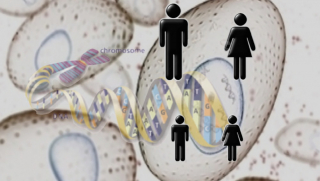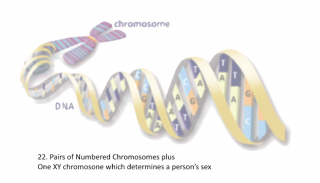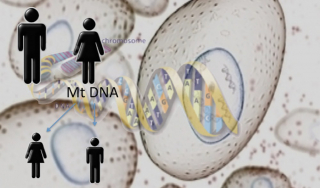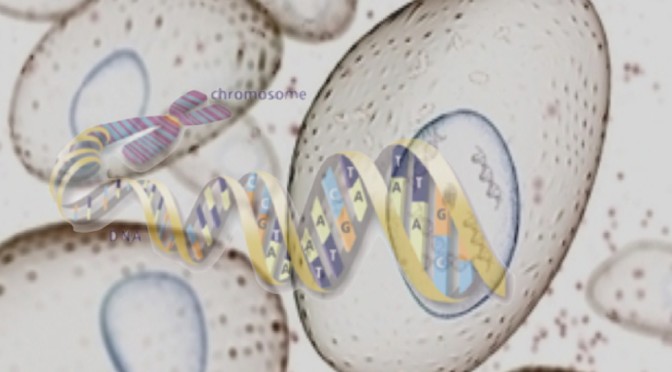The analysis of Human DNA is a newly emerging science which is in a stage of accelerating growth, due to the fact that the same basic technique can be used for a number of different purposes.
In forensic investigations it can help identify the perpetrator of a crime. In medicine, research showing our genetic make is being linked to a predilection to certain illnesses. It can therefore assist in the cost effective targeting of preventative care.
It can also tell us much about our heritage.
The analysis of Human DNA is a newly emerging science which is in a stage of accelerating growth, due to the fact that the same basic technique can be used for a number of different purposes.
In forensic investigations it can help identify the perpetrator of a crime. In medicine, research showing our genetic make is being linked to a predilection to certain illnesses. It can therefore assist in the cost effective targeting of preventative care.
It can also tell us much about our heritage.
Cells, Nucleii and Chromosones
 DNA is found in the neucleus of every cell within the human body were it works in conjuction with RNA to produce proteins which determine all our biological traits. Within the structure of the DNA there are 22 pairs of numbered Chromosones which contain two versions of each chromosone, one drawn from the mother and one from the father.
DNA is found in the neucleus of every cell within the human body were it works in conjuction with RNA to produce proteins which determine all our biological traits. Within the structure of the DNA there are 22 pairs of numbered Chromosones which contain two versions of each chromosone, one drawn from the mother and one from the father.
Structure of DNA
 Although the structure of DNA is complex the nature of the strucure is a straightforward sequence of purines (A for Adenine, G for Guanine) and Pyrimidines (C for Cytosine, T for Thymine). In a double helix structure the double helix is linked by Purines and Pyrimidines ( A always bonds with T, G always bonds with C)
Although the structure of DNA is complex the nature of the strucure is a straightforward sequence of purines (A for Adenine, G for Guanine) and Pyrimidines (C for Cytosine, T for Thymine). In a double helix structure the double helix is linked by Purines and Pyrimidines ( A always bonds with T, G always bonds with C)
It is the sequence of these bonded links (AAAGAGAGGGGAAGA)which determines genetic structure.
Inheritance
 The two versions of DNA inherited from parents have distinctive markers called STR’s (Short Tandem Repeats). A child’s STR pattern will include both the parents STR’s. These markers can help pinpoint parents or grandparents of a child. STR’s however become unreliable beyond that as the mutations change relatively frequently and can reverse.
The two versions of DNA inherited from parents have distinctive markers called STR’s (Short Tandem Repeats). A child’s STR pattern will include both the parents STR’s. These markers can help pinpoint parents or grandparents of a child. STR’s however become unreliable beyond that as the mutations change relatively frequently and can reverse.
XY Pairing
 The XY Pairing is quite different. Each male child receives an X chromosome from the mother and a Y chromosome from the father. Over the history of Homo Sapiens, the X and Y chromosomes have experienced two kinds of genetic mutation. STR’s occur as they do in other sections of the DNA, and are similarly relatively transient. In the XY pairing another mutuation occurs SNP’s(Single Nucleotide Polymorphism) or “snips”
The XY Pairing is quite different. Each male child receives an X chromosome from the mother and a Y chromosome from the father. Over the history of Homo Sapiens, the X and Y chromosomes have experienced two kinds of genetic mutation. STR’s occur as they do in other sections of the DNA, and are similarly relatively transient. In the XY pairing another mutuation occurs SNP’s(Single Nucleotide Polymorphism) or “snips”
Tracing Ancestors
SNP mutations happen infrequently and do not reverse. For males analysis of the structure of the Y chromosome makes it possible to trace back male ancestors for tens of thousands of years and to identify which tribe the person belongs to. The scientific name for “tribe” is Haplogroup.
DNA Discrimination
A female child however receives an X chromosome from both father and mother but no Y chromosome . It is not possible therefore to trace a woman’s patrilineal heritage directly. It can be traced through the Y DNA of a father, brother or uncle, assuming those relationships are firmly established.
Mitochondri
 All of us, male and female, also carry, independent of the chromosomes in the nucleus of each cell, a material called Mitochondri. It is the material which enables cells to use the energy generated from food. It has its own independent, stable DNA and it is only inherited from our mothers. The Mitochondri therefore permits the tracing of our matrilineal heritage.
All of us, male and female, also carry, independent of the chromosomes in the nucleus of each cell, a material called Mitochondri. It is the material which enables cells to use the energy generated from food. It has its own independent, stable DNA and it is only inherited from our mothers. The Mitochondri therefore permits the tracing of our matrilineal heritage.
This tracing is possible for both men and women without a need to use relatives as a reference.
